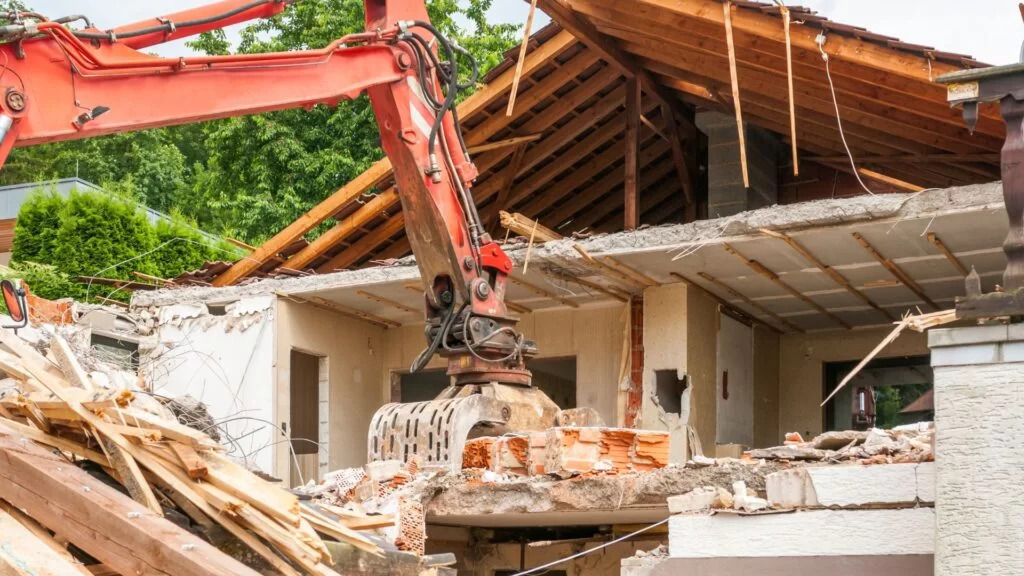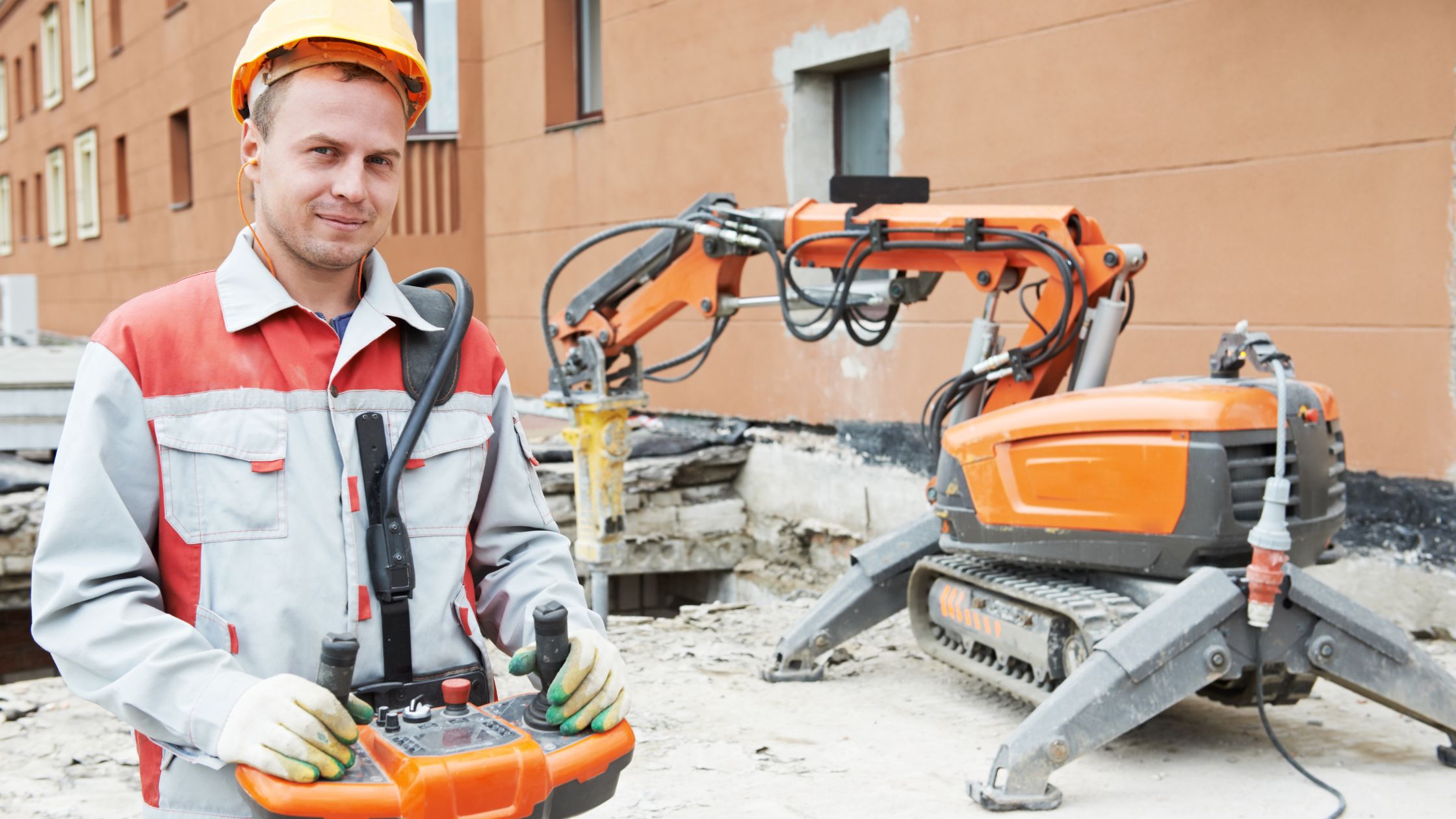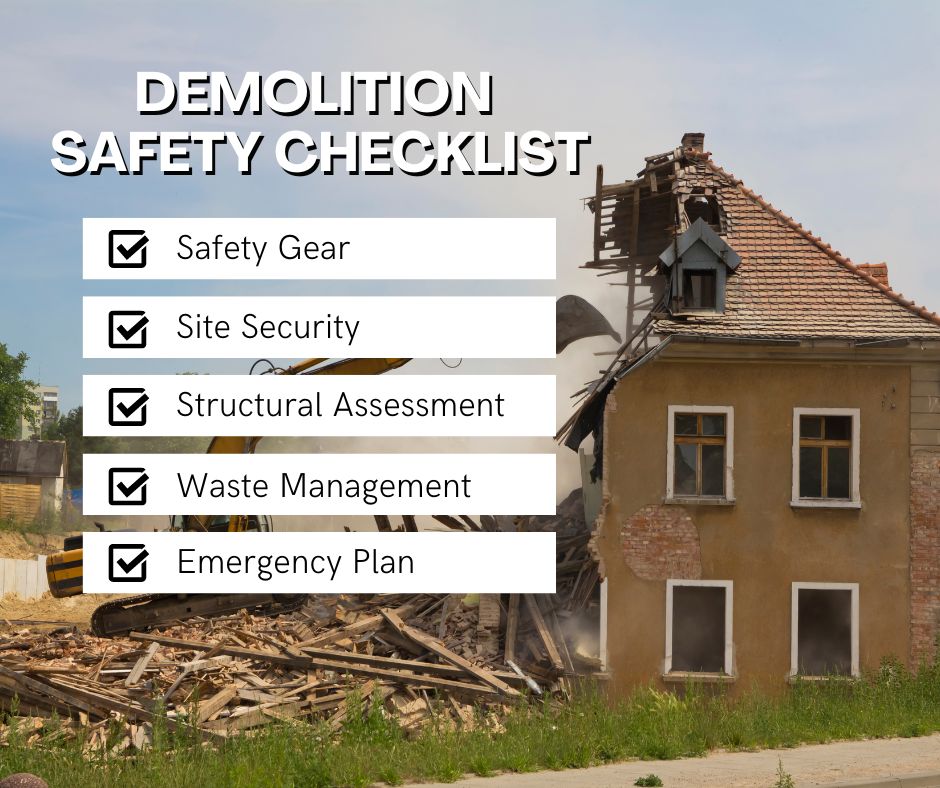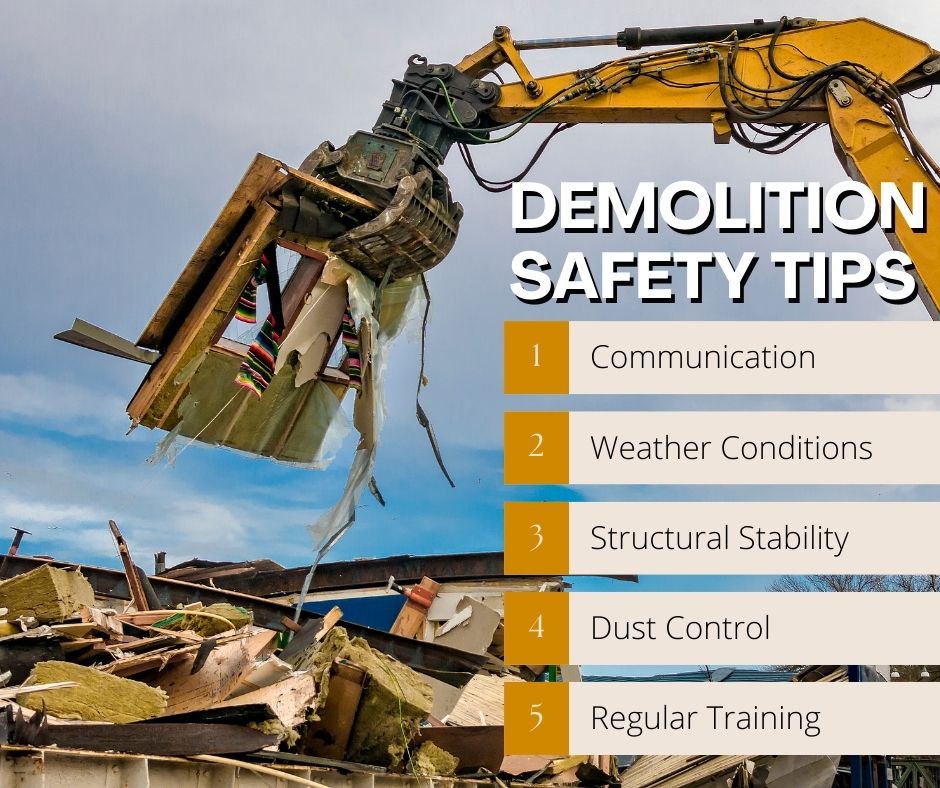
Demolition services and demolition contractors are essential in clearing any place for new constructions, remodelling projects, and land management. Demolition should be carried out safely and efficiently.
This guide covers the successful process of demolition and important things property owners need to know for safe demolition. That said, let’s get this started!
Demolition Services
Demolition is not just knocking buildings out. This requires proper planning with thoughtful consideration and skilled labour. There are two types of serious demolition projects :
Mechanical Demolition
This demolition technique involves using heavy equipment, such as bulldozers or cranes, to pull down tall buildings. It’s quick and effective for more massive structures.
Deconstruction
This process is more environmentally conscious since it breaks down hazardous materials in a building piece by piece. Therefore, the materials used to build one building are recycled or reused in other buildings.
Whatever the chosen strategy is, safety should always be the highest priority. This includes clearing the site, planning safety measures, and acquiring proper permits.
Safety equipment and precautions must be in place to ensure health and safety for all. With proper resources and a good team, demolition can be done safely and quickly.
Building Demolition Process
The building demolition process involves several key steps. First, you need to plan everything carefully. This includes deciding how to take down the building and preparing the site.
Planning
Before anything else, you should make a detailed plan. This involves understanding the structure, creating a timeline, and deciding on the method of demolition. There are different ways to demolish a building, with demolition methods including mechanical demolition (using machines like bulldozers) and deconstruction (taking apart the building piece by piece).
Permits
You need to get the right permits before starting. Local regulations vary, so check with your city or county to find out what you need. Permits ensure the work is done safely and legally.
Site Preparation
The site must be prepared before demolition and debris removal begins. This involves securing the area, removing any hazardous materials like asbestos, and ensuring that utilities like water and electricity are turned off.
Demolition Safety Checklist
Safety comes first in any demolishing projects. You can use this brief checklist to make sure you cover all the important safety and control measures below:
✔️Safety Gear: All workers must wear protective gear. This includes helmets, gloves, goggles, and safety boots. Proper gear helps prevent injuries.
✔️Site Security: The demolition site should be fenced off to keep unauthorized people out. Warning signs should be clearly posted.
✔️Structural Assessment: Before demolition starts, a structural assessment should be conducted. This helps identify any potential hazards or issues with the building structure.
✔️Waste Management: Plan for proper disposal of debris. You should have containers ready for sorting and recycling materials. This helps maintain the site clean and safe.
✔️Emergency Plan: Have an emergency plan in place. This includes knowing what to do in case of an accident and having first aid kits available.
How to Safely Demolish a Building
Safely demolishing a building involves several important steps. Here’s a simple guide to follow:
Hire Professionals
It’s best to hire professionals for the demolition work. They have the experience and equipment needed to do the job safely.
Use the Right Equipment
Depending on the building, different equipment might be used. For example, a high-reach excavator can be used for tall buildings, while smaller machines are suited for single-story structures.
Controlled Demolition
For large buildings, controlled demolition is often used. This involves using explosives to bring down the structure in a controlled manner. This method requires careful planning and expert handling.
Check for Hazards
Before starting, check for any hazards such as gas lines or unstable structures. Address these issues to mitigate risks and avoid accidents.
Monitor the Process
Throughout all the measures of demolition, monitor the process closely. Make sure all safety protocols are followed and address any issues immediately.
Demolition Safety Tips
Here are some safety tips to keep in mind during demolition:
- Communication: Keep clear communication with all workers. Everyone should know their roles and what to do in case of an emergency.
- Weather Conditions: Avoid demolition during severe weather. Heavy rain or strong winds can increase risks.
- Structural Stability: Ensure that the remaining structure is stable during the
- Dust Control: Demolition can create a lot of dust. Use water sprays or dust process. Unstable structures can collapse unexpectedly suppressants to keep dust levels down and protect everyone’s health.
- Regular Training: Ensure that all workers receive regular training on demolition safety practices. This helps everyone to be updated on the latest safety protocols.
Demolition Plans
Creating a detailed demolition and safety plan is essential for a successful project. Here’s what to include in your plan:
Scope of Work
Outline exactly what will be demolished and how. This includes the building structure, any attached structures, and any environmental impact or required cleanup.
Timeline
Create a timeline for the project. Include key milestones with start and end dates.
Budget
Set a budget for the demolition project. Include costs of manpower, equipment, permits, and debris disposal.
Risk Assessment
Identify risks and how to manage them well. This includes assessing the building structure and surrounding environment and identifying any hazards.
Coordination
Coordinate with other professionals, such as architects or city planners. Good coordination ensures smooth operations.
Do Demolition Safely and Efficiently with Ace Pro
Besides safety measures, demolition’s complex process also requires a well-planned strategy for efficiency and safety. By following the steps outlined in this guide, you can ensure that your demolition project is done safely and efficiently. Whether you’re clearing space for new construction or managing an old building, proper planning, construction materials and safety measures are key to a successful demolition.
For expert help with your demolition needs, trust Ace Pro. Our experienced team is dedicated to providing top-notch service and ensuring your project is completed with precision and care. Contact AcePro today for a consultation and let us handle the heavy lifting, so you can focus on your next big project!





